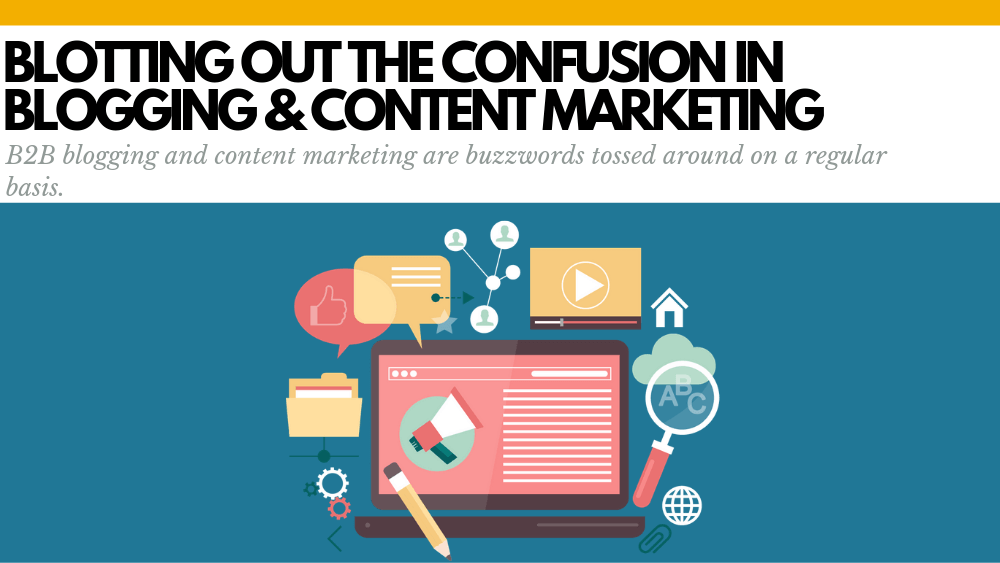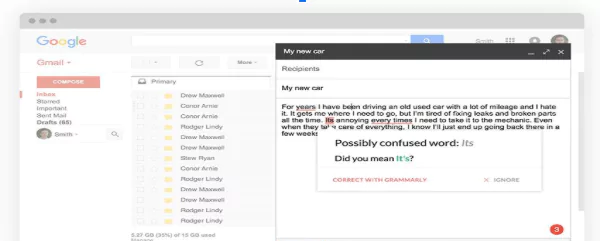Originally published September 5, 2019 , updated on July 25, 2025
In most B2B conversations about marketing, people often throw blogging and content marketing interchangeably, as if they meant the same thing.
We wish it were true. Unfortunately, it is not.
Blogging and content marketing are two effective techniques businesses use to ensure business growth. And their similarity ends there.
However, understanding the core differences between these two and how they complement each other is vital to improving your overall marketing strategy.
In this blog post, we discuss the two topics in detail, highlight the key differences, and provide actionable tips to leverage both in your marketing effectively.

What Is Blogging?
Blogging is the practice of creating and publishing written content, typically on a website, to engage an audience (like the one you are reading right now).
Blogs are designed to educate, entertain, or inspire readers, and they are a core component of content marketing and serve as a platform to share industry insights and updates or publish thought leadership content.
For example, a tech company might publish a blog post about the latest industry trends to attract potential customers.
What is Content Marketing?
Content marketing is a broader marketing strategy focusing on content to build, attract, engage, and convert a target audience. It includes different types of content, such as blogs, videos, infographics, whitepapers, social media posts, and more.
Content marketing aims to deliver value across multiple channels and formats, such as websites, social media, podcasts, webinars, and more.
For instance, a blog content marketing strategy can combine a blog post with a promotional video and a social media campaign to amplify reach.
Blogging vs. Content Marketing: Key Differences
While blogging is a subset of content marketing, they both have different scopes and what they want to achieve. In addition, how they are distributed is also different.
- Blogging focuses on written content published on a blog, while content marketing includes diverse formats like videos, podcasts, etc..
- Blogs aim to inform or engage, often driving organic traffic through SEO. Content marketing aligns content with business and growth objectives, such as lead nurturing or sales.
- Blogs are primarily hosted on a website, while content marketing leverages multiple channels, such as websites, social media, email, paid ads, webinars, and even physical content distribution like posters and flyers.
Understanding these differences is crucial for building a cohesive blog content marketing strategy that maximises impact.
Advantages of Blogging and Content Marketing
Both blogging and content marketing offer unique benefits when used effectively. However, you need to tailor each strategy based on what you want to achieve.
Advantages of Blogging
It Helps Build Authority
Blogs position your brand as a thought leader in your industry by helping you with creating thought-leadership content, product or service-centric articles, industry-related resources, customer experiences and journeys, and helpful tutorials to help your potential customers.
When you regularly publish content that solves problems and educates the audience, like we do here at our content marketing agency, people (and Google, of course) take notice.
That’s also why blog posts are considered by 79% of marketers as the best option to distribute content, according to Content Marketing Institute.
It Helps Boost SEO
Regularly updated blogs improve search engine rankings by targeting keywords like blogging and content marketing.
For example, you may have landed on this page after searching to learn about the difference between blogging and content marketing.
It Drives Targeted Traffic
Engaging blog posts can attract organic visitors to your website. According to HubSpot, businesses that regularly publish blogs get 55% more web traffic.
As these visitors may be at different stages of buying, such as awareness, consideration, or decision, the chances of them converting are high.
Advantages of Content Marketing
It Improves Brand Reach
Diverse formats like videos and infographics appeal to different audience preferences and can reach them via different channels like social media, websites, podcast platforms, etc.
It Improves Engagement
Interactive content, such as quizzes or webinars, fosters deeper connections and leads to better brand recognition.
It Helps Improve Conversion
Creating purposeful and engaging content that solves customer pain points can guide potential customers through the sales funnel. This leads to increased conversion and sales.
How to Include Blogging and Content Marketing in Your Strategy
Integrating blogging and content marketing is at the heart of building a successful marketing strategy in today’s content-driven economy.
Follow these steps to blend blogging with other content marketing techniques:
1. Start with a Solid Plan

Planning is the backbone of effective blogging and content marketing. Create a content calendar to streamline the entire content creation process, from outlining topics and formats to sharing supporting resources, assigning writers and editors, and scheduling content.
Find answers to the following questions:
- What are your business goals (lead generation, brand awareness)?
- Who is your target audience (customers, founders, midsize businesses)?
- Which platforms (YouTube, LinkedIn) will you use for distribution?
The insights from these questions help you build a well-structured plan and ensure your content aligns with your objectives.
2. Create High-Quality, Helpful Content
Create content that helps customers solve problems and make decisions easier. There are several ways to do this, such as:
- Creating videos to complement your blogs can result in a 70% increase in traffic, says Semrush.
- Repurposing blog content into social media posts or email newsletters to reach a wider audience.
- Cutting your lengthy podcast into tiny pieces of content to create short-form content for X, Instagram, YouTube, and more.
3. Distribute Across Multiple Channels

Creating good content is just half of the content strategy. Distribution is the other. A strategic distribution plan helps your content reach more audiences looking for the products and services you offer.
You can use the following platforms to distribute content:
- Social media: Platforms like LinkedIn, X, or Instagram allow you to share snippets of your content.
- Email marketing: Use email marketing to send newsletters with links to your latest blog posts.
- Paid ads: You can use targeted ads to boost visibility on platforms like Google or Facebook.
You can also use AI tools to create social media posts, short-form video content, Instagram stories from blog posts, long-form videos, and podcasts.
4. Measure Success
Tracking key metrics is vital to evaluate your blog content marketing strategy and understand what’s working and what’s not.
Use tools like Google Analytics to monitor:
- Website traffic from blog posts.
- Engagement rates on social media.
- Conversion rates from calls-to-action (CTAs) in your content.
For example, if a blog post drives sign-ups for a webinar, measure where the traffic came from, like Google, social media, etc., and adjust the strategy to focus more on the best-performing channel.
Frequently Asked Questions
Is Blogging the Same as Content Marketing?
No. Blogging focuses on written content, while content marketing focuses on creating content in diverse formats and distributing it on different channels.
How Often Should I Blog?
Publishing 1-2 high-quality posts per week helps maintain consistency and boost SEO. However, it depends on your brand and marketing goals.
Can Content Marketing Work Without Blogging?
Yes. However, a marketing strategy that includes blogging and content marketing is the best way to go.
Blogging vs Content Marketing: Which Should You Go With?
Good marketing puts the focus on the target audience, like what they want, what their problems are, etc., and tries to solve these issues. While blogging and content marketing can help achieve this, their reach and potential are limited individually.
Combining these two, you can create an efficient and result-focused blog content marketing strategy to bring high-converting traffic.
Book a free consultation call with our blog content marketing agency and learn how we can help you with this through our content by humans for humans.
Post Views: 1053


















